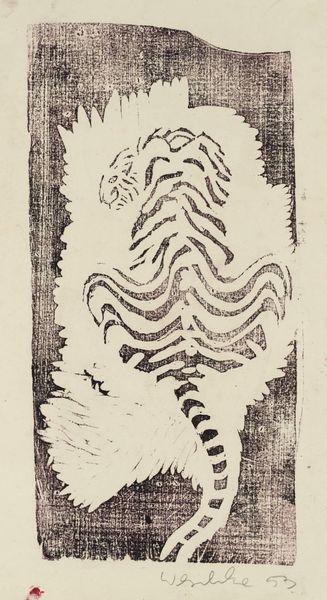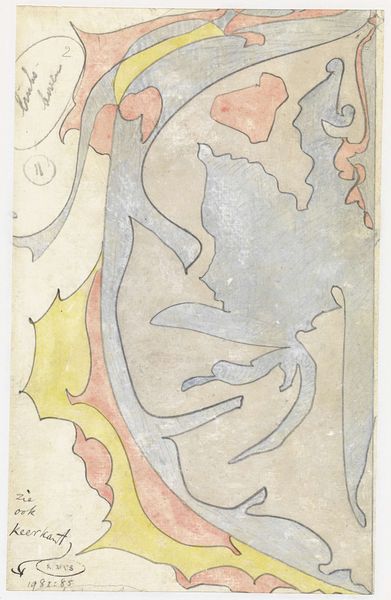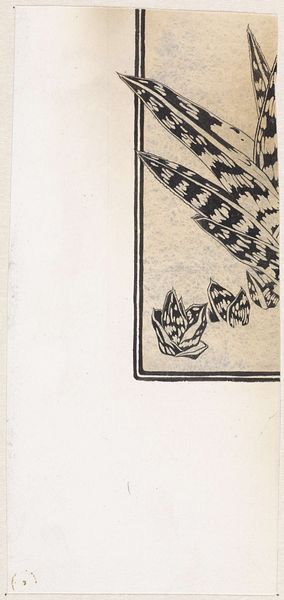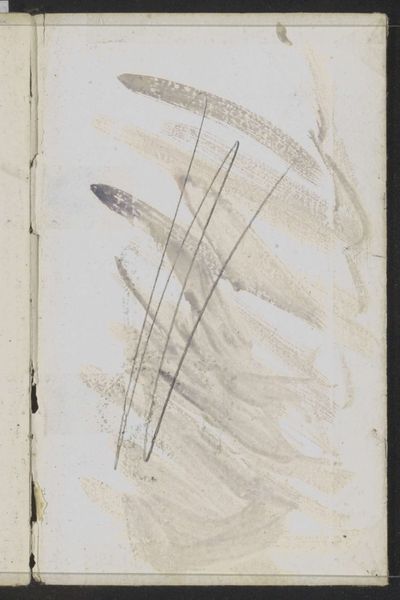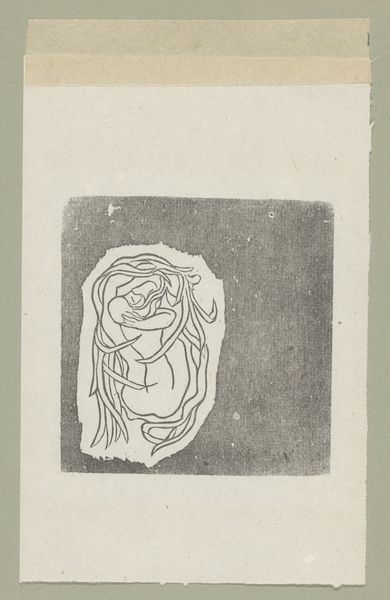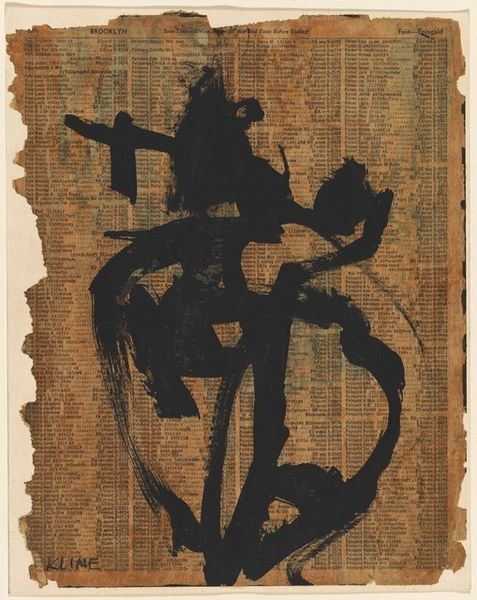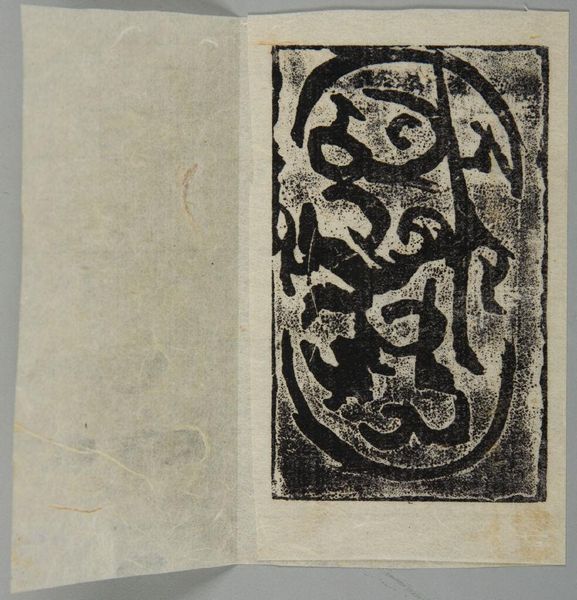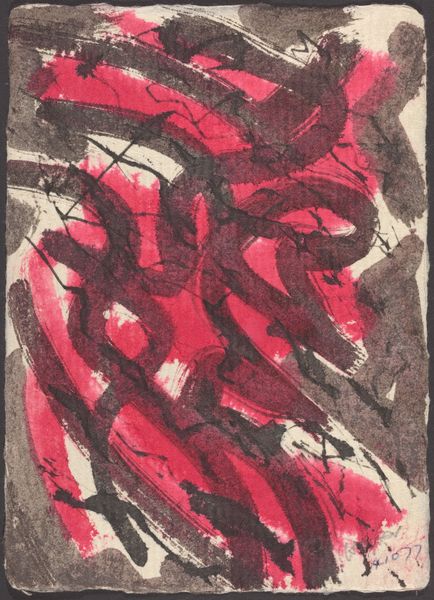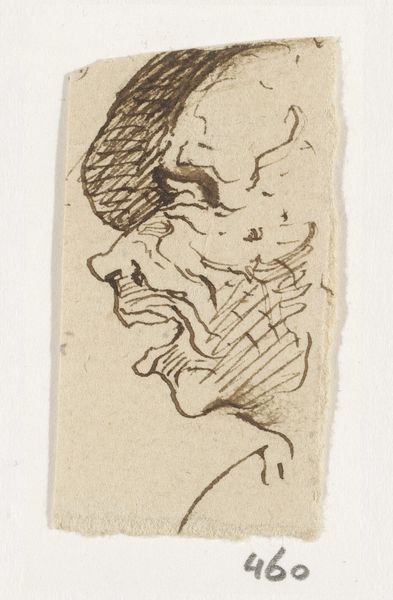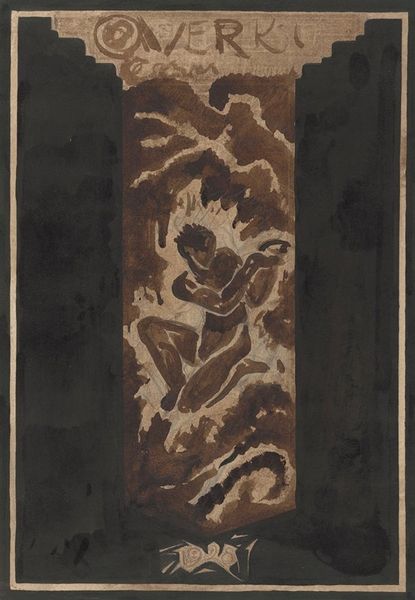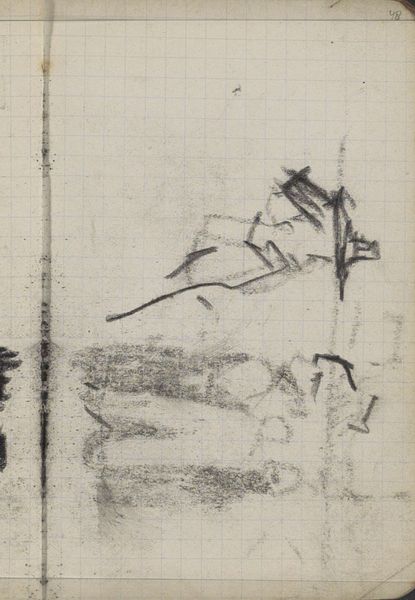
Dimensions: image: 233 x 116 mm support: 455 x 300 mm
Copyright: © The Estate of Karl Weschke | CC-BY-NC-ND 4.0 DEED, Photo: Tate
Editor: So, this is Karl Weschke’s "Tiger Tiger." It's undated, but the printmaking technique gives it such a raw, primal feel. The tiger seems almost…vibrating. What do you see in this piece? Curator: Oh, I love that 'vibrating' idea! It reminds me of Blake's poem. Weschke's tiger isn't just an animal; it’s a question mark, isn't it? He's asking us to confront the wildness within ourselves, that untamed energy. Do you feel that connection? Editor: I do, especially with the colors and the almost blurred lines, it feels…visceral. Curator: Exactly! It's less about depiction and more about feeling. Perhaps Weschke wanted us to feel the tiger rather than simply see it. It's a powerful invitation, don't you think? Editor: It really is. I'll definitely be thinking about my own 'inner tiger' for a while!
Comments
Join the conversation
Join millions of artists and users on Artera today and experience the ultimate creative platform.
tate 8 months ago
⋮
Born in Germany, Weschke came to Britain as a prisoner of war and has remained here ever since. In 1953, struggling to earn a living, he became an assistant to the lion feeder at a London circus. He took advantage of the situation to make drawings and prints of circus animals. In the early twentieth century, the German Expressionists made many woodcuts, and in choosing this medium Weschke is looking to his native heritage, while the title of this work suggests his debt to Britain in its reference to a poem by William Blake. For each example of the Tiger prints the artist inked the block in a different way, so each one is unique. Gallery label, August 2004
